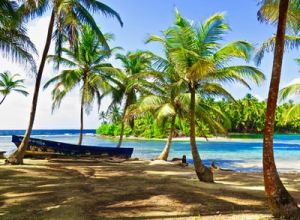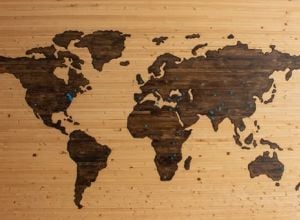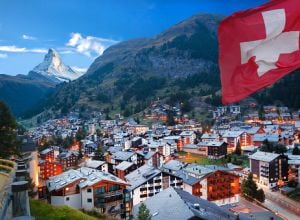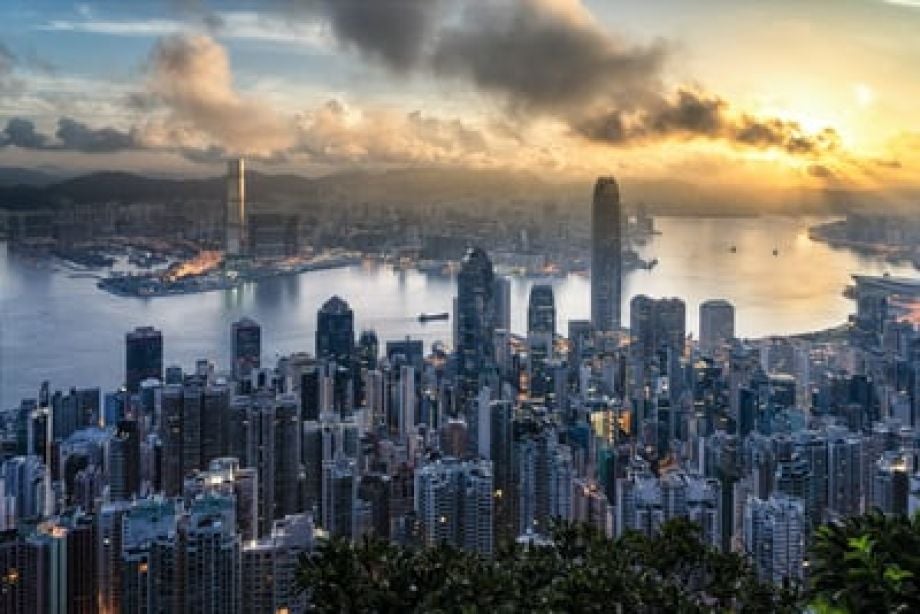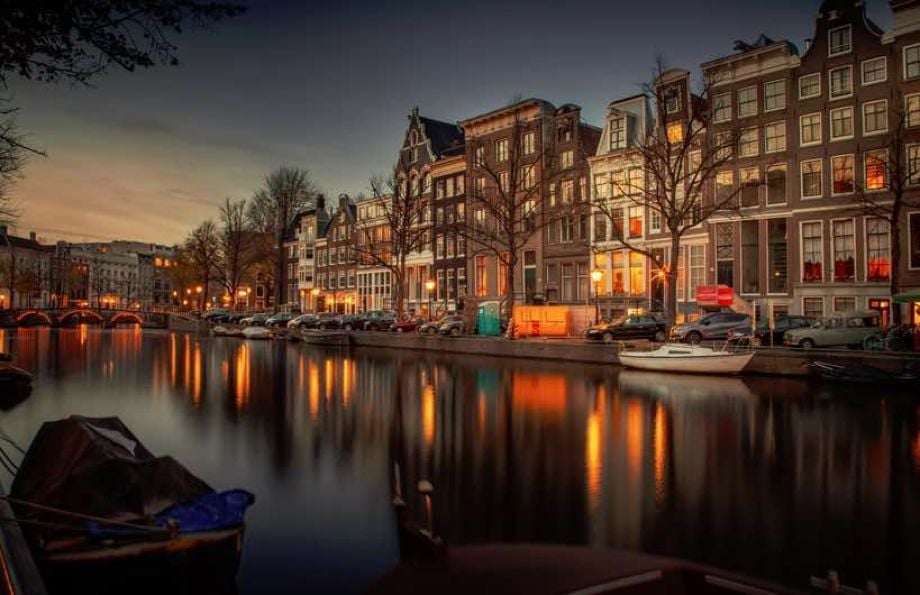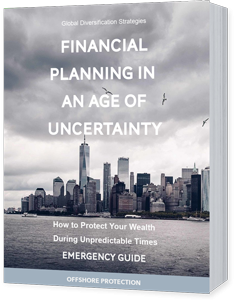When you think of the richest countries in the world, the first ones which probably come to mind are economic powerhouses such as the United States, China, and Japan. While these are indeed among the wealthiest nations on earth with the largest economies, merely taking the gross size of the economy as a measure of wealth is not sufficient.
In fact, some of the smallest nations on earth are really also some of the wealthiest when we adjust for population size and quality of life.
In this article, we will list the 10 richest in the world according to the IMF GDP per capita data. We will start with an overview of how best to accurately measure wealth, and what we have decided to use in this study.
Key Takeaways
- GDP per capita adjusted for purchasing power parity is a key metric for ranking the world's richest countries
- Small nations, financial hubs, and oil-rich states often dominate wealth rankings due to specialized economies
- Wealth measurement considers factors beyond GDP, including living costs and economic policies
Using GDP per Capita as a Measure of Wealth
Gross Domestic Product (GDP) on its own is not an accurate measure of the wealth of a nation. This is because it skews the results towards countries with massive populations, while smaller countries with only a few million citizens can never compete. In order to determine the wealth of a nation more reliably, we need to divide GDP by the population size, which gives us a measure of the GDP per capita, a far more accurate measure of the average wealth per person.
We can further extend this analysis by recognising that the cost of living varies in each country. Therefore, what may be a lot of money in one country (according to its purchasing power) might actually be worth much less in another country. As such, many studies have made new GDP per capita measures adjusted according to purchasing power parity (PPP).
While this makes sense in principle, there are downsides to making such an adjustment. The PPP GDP per capita is calculated using the average cost of a basket of goods in each country. However, measuring and adjusting in such a way is a somewhat inaccurate and subjective process, and is thus far from perfect.
For this reason, we have opted to rank the richest countries in the world purely according to unadjusted (nominal) GDP per capita, as it gives a completely unbiased and accurate measurement. We have used the most recent 2025 data provided by the IMF in our analysis.
10 Richest Countries in the World by GDP Per Capita

1. Luxemburg
GDP per Capita: $141,080
Luxemburg is undeniably the richest country in the world according to both measures of GDP per capita (nominal and PPP), with a significant gap between themselves and second place.
Luxemburg is a tiny European nation with a population of only about 630,000. It is well-known for its high-income levels and employment rates, as well as low inflation. Many inhabitants from neighbouring European nations travel to Luxemburg for work while residing in their home countries.
It has various successful industries, is an ideal jurisdiction for company incorporation and offshore banking, and has a highly skilled workforce. All of these factors have come together to make it the richest country in the world by a long way.
What Makes the Nation Wealthy?
- Financial Services & Banking: Private banking, wealth management, and a large fund-management sector
- Steel & Manufacturing: Historically significant, though now diversified
- Information & Communications Technology (ICT): Hosting EU headquarters for major e-commerce/tech companies
- Professional & Corporate Services: Law, consulting, and fintech startups

2. Switzerland
GDP per Capita: 111,720
Switzerland is the third richest country in the world according to nominal GDP per capita. It has a reputation for being one of the most peaceful, happy, and healthy nations. Switzerland has a stable economy and political system. The Swiss Franc is one of the strongest currencies in the world. Switzerland attracts a great deal of foreign investment and offshore clients thanks to its attractive tax regime and privacy preserving policies.
Switzerland’s main source of revenue comes from exports, along with its offshore financial industry, pharmaceuticals, and machinery. Due its extremely high living costs, Switzerland ranks lower on the list (fifth) if we adjust for PPP.
What Makes the Nation Wealthy?
- Banking & Insurance: Wealth management and private banking
- Pharmaceuticals & Life Sciences: Home to giants like Novartis and Roche
- Precision Manufacturing: Watches, machinery, and specialty chemicals
- Tourism: Particularly alpine tourism and hospitality

3. Ireland
GDP per Capita: 107,240
At number 2, Ireland has been a long-time contender among the richest countries in the world. It is a popular nation in which to incorporate and conduct business. Irish inhabitants enjoy high wages and a good standard of living. The high cost of living in Ireland means that it would drop a few places on this list if we adjusted according to PPP.
The main industries in Ireland include tourism, agriculture, and manufacturing. They also have a highly successful skilled services industry which include call centres, accounting, customer service, and legal services.
What Makes the Nation Wealthy?
- Technology: European headquarters for many U.S. tech multinationals (Google, Apple, Facebook, etc.)
- Pharmaceuticals & Medical Devices: Strong cluster of global pharma and biotech companies
- Financial Services: Investment funds, fintech startups, low corporate tax rate attracts FDI
- Export-oriented Food & Beverages: Specialty food products, although smaller compared to tech and pharma

4. Singapore
GDP per Capita: $93,960
Singapore is one of the strongest and fastest growing economies in the world. They have established themselves as an international hub for global financial services, as well as being wildly successful in various industries such as manufacturing, engineering, electronics, and biotechnology.
It is a land of opportunity to which many skilled workers migrate in search of the high incomes and good quality of life they offer. Furthermore, the cost of living in Singapore is not too expensive compared to many of the European nations on this list. When this is considered, they actually come in at second place on this list after adjusting for PPP, with an adjusted GDP per capita of more than $100,000 per person.
What Makes the Nation Wealthy?
- Financial Services: Major banking hub for Asia, strong wealth management sector
- Advanced Manufacturing & Electronics: Semiconductors, precision engineering
- Biotechnology & Pharmaceuticals: Growing R&D ecosystem, biomedical production
- Shipping & Logistics: One of the world’s busiest ports and a global maritime center

5. Norway
GDP per Capita: $90,320
Norway is one of a number of wealthy Nordic nations, and in fact ranks the highest according to nominal GDP per capita. Its population of about 5.5 million records a GDP per capita of $82,240 (which reduces to $67,978 if we adjust according to PPP).
Aside from being one of the wealthiest nations according to GDP per capita, it is consistently ranked as having the highest living standards in the world. This is thanks to its superior education system, public health services, and accessible social security system.
Norway’s primary income comes from its oil, gas, and petroleum exports. The people have a strong work ethic and are highly skilled in a number of important fields. In addition, they have some of the lowest unemployment and poverty rates of any nation on earth.
For more: Countries with the Highest Taxes in the World
What Makes the Nation Wealthy?
- Oil & Gas: Major exporter of petroleum and natural gas (North Sea resources)
- Maritime & Shipping: Shipping fleets and related services
- Renewable Energy: Hydropower, expanding wind power initiatives
- Aquaculture & Fisheries: Salmon and other seafood exports

6. Iceland
GDP per Capita: $68,840
The small Nordic Island country of Iceland has a population of only 366,425 (as of 2020), yet boasts one of the highest GDPs per capita in the world. Like other Nordic countries, this nation is known for its excellent quality of life, high minimum wages, low unemployment, and general prosperity.
About 85% of Iceland’s primary energy supply comes from locally produced renewable energy sources. As such, it is one of the greenest economies in the world. Iceland is in fact the largest per capita electricity producer in the world, and majority of this comes from hydroelectric and geothermal power.
What Makes the Nation Wealthy?
- Tourism: Rapidly expanded over the last decade (natural attractions, hot springs, northern lights)
- Fishing & Seafood Processing: Traditional cornerstone of the economy
- Renewable Energy: Geothermal and hydropower, powering aluminum smelting and data centers
- Aluminum Smelting: Benefiting from low-cost renewable electricity

7. United States
GDP per Capita: $89,680
It is no surprise that the world’s biggest economy, the United States, features on this list of richest countries in the world. It is impressive that with its large population of over 300 million, it is able to rank in the top 10 according to GDP per capita. This gives an idea of the sheer magnitude of the US economy.
The US is rich in natural resources, along with a thriving technology industry. The US is known for its entrepreneurial and capitalist values, which attract foreign investors, entrepreneurs, and skilled workers from around the world.
What Makes the Nation Wealthy?
- Technology & Innovation: Silicon Valley, software, e-commerce, biotech
- Finance & Real Estate: Global financial markets (Wall Street), diverse real estate
- Manufacturing & Energy: Aerospace, automotive, oil & gas, renewables
- Entertainment & Media: Hollywood, music, digital streaming, gaming

8. Macao
GDP per Capita: $84,280
Macao, officially known as the Macao Special Administrative Region of the People's Republic of China, often ranks among the top ten wealthiest economies in the world by GDP per capita, with some estimations placing it as the seventh wealthiest overall. Its extraordinary wealth is largely driven by the robust gaming industry, which has earned Macao the title of the “Las Vegas of Asia.”
Over the past few decades, Macao transformed from a quiet Portuguese colony into a bustling global tourism hotspot, where luxury hotels and sprawling casinos attract visitors from around the globe. This surge in high-spending tourists has dramatically boosted Macao’s service sector and spurred substantial government revenues, enabling the region to invest in infrastructure, social welfare, and economic diversification initiatives.
What Makes the Nation Wealthy?
- Gaming & Casinos: Globally known as the “Las Vegas of Asia,” core economic driver
- Tourism & Hospitality: Resorts, luxury hotels, retail
- Real Estate Development: Driven by tourism and casino expansion
- Conventions & Events: Rapidly growing segment to diversify beyond gaming

9. Qatar
GDP per Capita: $72,970
Last on the list of top 10 richest countries in the world is Qatar. Qatar was certainly not always such a wealthy nation, but quickly rose through the ranks since it became one of the largest exporters of oil in the world over the last couple of decades. It also has a number of large natural gas plants which export to several countries around the world. As a result, its GDP grew rapidly from about $30 billion to over $200 billion in a short space of time.
Qatar first discovered oil on their land in 1939, and began producing large quantities in 1951. Much of the revenue went to the Royal Family at the time, as well as to Great Britain who was its ruling country. After it gained independence in 1971, and Khalifa bin Hamad took over as Head of State, Qatar increased its investment in health, education, social security, and housing, and reduced the share which went to the Royal Family.
As such, it has become a highly liveable country with high income levels and a good quality of life. It is more affordable than other countries on this list, which in fact means it would be placed third if we adjusted according to purchasing power parity (PPP).
What Makes the Nation Wealthy?
- Oil & Natural Gas: Leading exporter of liquefied natural gas (LNG)
- Petrochemicals & Refining: Downstream energy production
- Infrastructure & Real Estate: Large-scale development projects (stadiums, commercial sites)
- Finance & Investment: Sovereign wealth fund with global holdings

10. Denmark
GDP per Capita: $71,970
Denmark is yet another extremely wealthy Nordic country which also provides its citizens with a high quality, happy lifestyle. Even though Denmark has a relatively small population of about 5.8 million people, it boasts the 36th largest economy in the world by nominal GDP.
Denmark is renowned for its comprehensive social welfare model, which includes universal healthcare, free education at all levels, and an extensive safety net. This system significantly reduces poverty, promotes social mobility, and fosters a strong sense of well-being across the population, earning Denmark consistent placements near the top of global happiness and human development rankings.
Additionally, Denmark’s economy benefits from high-value exports—pharmaceuticals, machinery, and maritime services—and a growing focus on green technologies like wind energy. The taxes in Denmark may be among the world’s highest, yet the resultant infrastructure, public services, and support for innovation create a stable foundation for continued growth and prosperity.
What Makes the Nation Wealthy?
- Shipping & Maritime: Home to global shipping giant Maersk
- Pharmaceuticals & Life Sciences: Companies like Novo Nordisk
- Renewable Energy: Wind turbine manufacturing (e.g., Vestas), clean-tech solutions
- Machinery & Industrial Exports: Specialized manufacturing and engineering sectors
Top 50 Richest Countries in the World
| Rank | Country/Territory | GDP per Capita |
|---|---|---|
| 1 | Luxembourg | 141.08 thousand |
| 2 | Switzerland | 111.72 thousand |
| 3 | Ireland | 107.24 thousand |
| 4 | Singapore | 93.96 thousand |
| 5 | Norway | 90.32 thousand |
| 6 | Iceland | 90.11 thousand |
| 7 | United States | 89.68 thousand |
| 8 | Macao SAR | 84.28 thousand |
| 9 | Qatar | 72.76 thousand |
| 10 | Denmark | 71.97 thousand |
| 11 | Netherlands | 70.61 thousand |
| 12 | Australia | 67.98 thousand |
| 13 | San Marino | 61.52 thousand |
| 14 | Austria | 61.08 thousand |
| 15 | Sweden | 59.51 thousand |
| 16 | Belgium | 58.25 thousand |
| 17 | Germany | 57.91 thousand |
| 18 | Finland | 57.18 thousand |
| 19 | Canada | 55.89 thousand |
| 20 | Hong Kong SAR | 55.61 thousand |
| 21 | Israel | 54.37 thousand |
| 22 | United Kingdom | 54.28 thousand |
| 23 | United Arab Emirates | 51.29 thousand |
| 24 | France | 49.53 thousand |
| 25 | New Zealand | 48.23 thousand |
| 26 | Malta | 46.64 thousand |
| 27 | Andorra | 45.99 thousand |
| 28 | Italy | 41.71 thousand |
| 29 | Aruba | 41.49 thousand |
| 30 | Cyprus | 40.55 thousand |
| 31 | Puerto Rico | 38.51 thousand |
| 32 | Korea, Republic of | 37.67 thousand |
| 33 | Spain | 37.36 thousand |
| 34 | Bahamas, The | 37.18 thousand |
| 35 | Brunei Darussalam | 37.02 thousand |
| 36 | Slovenia | 36.50 thousand |
| 37 | Japan | 35.61 thousand |
| 38 | Taiwan Province of China | 34.92 thousand |
| 39 | Saudi Arabia | 33.29 thousand |
| 40 | Estonia | 33.23 thousand |
| 41 | Czech Republic | 33.04 thousand |
| 42 | Kuwait | 31.68 thousand |
| 43 | Portugal | 30.95 thousand |
| 44 | Guyana | 30.65 thousand |
| 45 | Lithuania | 30.51 thousand |
| 46 | Bahrain | 29.89 thousand |
| 47 | Slovak Republic | 28.18 thousand |
| 48 | Barbados | 26.23 thousand |
| 49 | Hungary | 25.70 thousand |
| 50 | Latvia | 25.68 thousand |
How to Get Access to Wealthy Countries
Gaining access to wealthy countries often requires strategic planning and meeting specific criteria. One common pathway is through investment migration programs. These initiatives allow individuals to obtain residency or citizenship in exchange for significant financial investments.
Many affluent nations offer "golden visa" programs. These typically involve real estate purchases, business investments, or government bond acquisitions. The required investment amounts vary by country but generally range from 100,000-1mil.
Education can serve as another entry point. Pursuing higher studies in wealthy countries may lead to post-graduation work opportunities and potential long-term residency. Some nations also have special visa categories for highly skilled professionals in specific fields.
Entrepreneurship presents another avenue. Start-up visas are available in several prosperous countries, designed to attract innovative business founders. These programs often require a solid business plan and proof of funding.
Work transfers within multinational companies can facilitate relocation to wealthy nations. Intra-company transfer visas allow employees to move to foreign branches or subsidiaries.
For those seeking permanent relocation, traditional immigration pathways remain viable. These typically involve securing employment offers, family sponsorship, or qualifying for humanitarian programs.
Regional Wealth Distribution Emerging Markets
Australia, Canada, and Resource-Based Wealth
Australia and Canada excel in resource-driven economies. Both nations capitalize on vast mineral deposits and agricultural lands. Australia's mining sector, particularly iron ore and coal, fuels its economic engine. The country also benefits from a robust agricultural industry.
Canada's economic strength stems from its oil and gas reserves, forestry, and mining operations. The nation's diverse natural resources contribute significantly to its GDP. Both countries have developed advanced technologies for resource extraction and processing, enhancing their competitive edge.
These nations have also invested in renewable energy sectors, balancing economic growth with environmental concerns. Their stable political systems and skilled workforces attract foreign investment, further bolstering their economic positions.
The European Union: Germany, France, and the Netherlands
Germany, France, and the Netherlands form the backbone of the European Union's economy. Germany, Europe's largest economy, thrives on its manufacturing prowess, particularly in automotive and machinery sectors. The country's commitment to innovation and research keeps it at the forefront of technological advancements.
France boasts a diverse economy, excelling in aerospace, luxury goods, and agriculture. The nation's strong service sector, including tourism, contributes significantly to its economic output.
The Netherlands leverages its strategic location for trade and logistics. Rotterdam, Europe's largest port, plays a crucial role in the continent's commerce. The Dutch economy also benefits from a robust agricultural sector and growing technology industry.
These countries collaborate closely within the EU framework, enhancing their collective economic strength and global influence.
Asian Tigers: Hong Kong, Taiwan, and South Korea
Hong Kong, Taiwan, and South Korea, known as Asian Tigers, have transformed from developing economies to global powerhouses. Hong Kong serves as a major financial hub, benefiting from its strategic location and business-friendly policies.
Taiwan dominates the semiconductor industry, producing chips vital for electronics worldwide. The island's tech-focused economy continues to drive innovation in various sectors.
South Korea excels in electronics, automotive, and shipbuilding industries. Companies like Samsung and Hyundai have become global brands, showcasing the country's technological prowess.
These nations have invested heavily in education and infrastructure, creating skilled workforces and efficient business environments. Their economic models, focusing on exports and technological advancement, have inspired other developing nations.
The Economic Ascent of India and Indonesia
India and Indonesia, two of the world's most populous nations, are rapidly emerging as economic powerhouses. India's diverse economy spans IT services, pharmaceuticals, and manufacturing. The country's young workforce and growing middle class drive domestic consumption and economic growth.
India's tech sector, centered in hubs like Bangalore, attracts global investment and nurtures innovative startups. The nation's pharmaceutical industry plays a crucial role in global healthcare, producing affordable medicines.
Indonesia, Southeast Asia's largest economy, benefits from abundant natural resources and a growing consumer market. The country's palm oil, coal, and natural gas exports contribute significantly to its GDP.
Both nations face challenges in infrastructure development and economic reforms. However, their large populations and increasing digitalization present immense growth opportunities.
The Middle East: Saudi Arabia, UAE, and Turkey
Saudi Arabia, the United Arab Emirates (UAE), and Turkey represent diverse economic models in the Middle East. Saudi Arabia, traditionally oil-dependent, is diversifying its economy under the Vision 2030 plan. The kingdom invests in tourism, technology, and renewable energy to reduce oil reliance.
The UAE, particularly Dubai, has transformed into a global business and tourism hub. The nation's strategic location, world-class infrastructure, and business-friendly policies attract international companies and investors.
Turkey bridges Europe and Asia, benefiting from its geographical position. The country's diverse economy includes manufacturing, agriculture, and a growing technology sector. Turkey's young population drives innovation and entrepreneurship.
These nations are investing in renewable energy projects, recognizing the need to transition from fossil fuels. Their efforts in economic diversification and modernization aim to ensure long-term prosperity and stability in the region.
Conceptualizing Wealth
Gross Domestic Product (GDP)
GDP represents the total value of goods and services produced within a country's borders in a specific time period. It's a key indicator of economic health and growth. GDP calculation includes consumer spending, government expenditure, business investments, and net exports.
Countries with high GDPs often have robust economies and significant global influence. The United States, China, and Japan consistently rank among the top nations by GDP.
GDP per Capita
GDP per capita divides a country's total GDP by its population. This metric provides a more nuanced view of individual economic well-being. It indicates the average economic output per person in a country.
Luxembourg, Singapore, and Ireland frequently top GDP per capita rankings. These nations often have small populations and specialized economies. GDP per capita helps compare living standards across countries of different sizes.
GDP (PPP) and International Comparisons
GDP adjusted for Purchasing Power Parity (PPP) accounts for differences in living costs between countries. This adjustment allows for more accurate international comparisons of economic output and living standards.
PPP conversion rates are used to equalize the purchasing power of different currencies. This method provides a clearer picture of relative wealth between nations. China's GDP (PPP) often surpasses its nominal GDP in rankings due to lower living costs.
Income and Standard of Living
Income levels significantly impact a country's standard of living. Higher incomes generally correlate with better access to education, healthcare, and consumer goods. However, income distribution within a country also plays a crucial role.
Countries like Norway and Switzerland consistently rank high in both income and living standards. Income inequality can affect overall societal well-being even in wealthy nations. Gini coefficient and other metrics help measure income distribution within countries.
Inflation and Cost of Living
Inflation rates and cost of living impact a country's wealth and citizens' purchasing power. High inflation erodes the value of money and can lead to economic instability. Countries with low, stable inflation rates often have stronger economies.
Cost of living varies significantly between and within countries. Cities like Singapore, Hong Kong, and Zurich frequently top global cost of living rankings. These factors influence real income and quality of life. Economists use various indices to compare costs across different regions and countries.
Economic Measurement
International Monetary Fund (IMF) and World Bank Data
The IMF and World Bank play crucial roles in collecting and analyzing global economic data. These institutions provide standardized economic indicators for countries worldwide. The IMF's World Economic Outlook database offers GDP estimates, growth projections, and other key metrics.
The World Bank maintains extensive datasets on national accounts, trade, and development indicators. These organizations use consistent methodologies to enable meaningful cross-country comparisons.
Purchasing Power Parity vs Nominal GDP
Purchasing Power Parity (PPP) and nominal GDP are two primary methods for measuring economic output. PPP adjusts for price differences between countries, allowing for more accurate comparisons of living standards.
Nominal GDP uses market exchange rates but can be distorted by currency fluctuations. PPP is often preferred for comparing economies, as it reflects the real purchasing power of citizens.
The choice between PPP and nominal GDP can significantly impact country rankings in wealth comparisons.
National Income and Economic Output
National income measures the total value of goods and services produced by a country's residents. It includes metrics like Gross National Income (GNI) and Net National Income (NNI).
Economic output, typically measured by GDP, represents the total value of goods and services produced within a country's borders. GDP per capita is a common metric for comparing average wealth across nations.
These measures provide insights into a country's economic performance, productivity, and standard of living. Policymakers and economists use this data to assess economic health and make informed decisions.
Income Tax, Corporate Tax Rate, and Tax Havens
Many wealthy countries offer attractive tax environments. Ireland's 12.5% corporate tax rate has drawn tech giants and pharmaceutical companies. Switzerland's cantonal system allows for competitive rates and has made it a favored location for multinational headquarters.
Singapore maintains low personal and corporate tax rates, enhancing its appeal to international businesses. Luxembourg's tax regime, while evolving due to international pressure, remains favorable for certain financial operations.
Some jurisdictions like the Cayman Islands and Bermuda operate as tax havens, offering zero corporate tax rates. This status has contributed to their high GDP per capita figures, though it has also drawn scrutiny from larger economies.
Diversity of Wealth Sources
The richest countries often derive wealth from varied sources. Luxembourg's economy centers on financial services, but also includes strong IT and communications sectors. Switzerland combines banking prowess with high-value industries like pharmaceuticals and precision manufacturing.
Norway balances oil wealth with a strong welfare system and investments in renewable energy. Singapore has transformed from a trading port to a global hub for finance, technology, and biomedical sciences.
Qatar and the UAE have used oil revenues to fund economic diversification, investing in sectors like real estate, aviation, and tourism. Ireland's economy benefits from technology, pharmaceuticals, and a growing startup ecosystem.
This economic diversity helps insulate these countries from sector-specific downturns and contributes to their sustained prosperity.
For more:
How Can Offshore Protection Help You?
____
Offshore Protection is a boutique offshore consultancy that specailizes in asset protection solutions creating bespoke global strategies using offshore companies, trusts, and second citizenships so you can confidently protect what matters most.
We help you every step of the way, from start to finish with a global team of dedicated lawyers and consultants. Contact us to see how we can help you.


